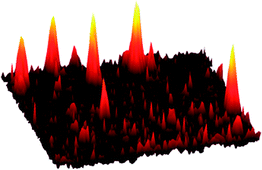Absorption and scattering microscopy of single metal nanoparticles
Abstract
Several recently developed detection techniques opened studies of individual metal

* Corresponding authors
a
MoNOS, Huygens Laboratory, University of Leiden, P.O. Box 9504, Leiden, The Netherlands
E-mail:
orrit@molphys.leidenuniv.nl
b Institute for Physical Chemistry, Johannes Gutenberg University of Mainz, Jakob-Welder-Weg 11, Mainz, Germany
c Université Bordeaux and CNRS, 351, Cours de la Libération, Talence Cedex, France
Several recently developed detection techniques opened studies of individual metal

 Please wait while we load your content...
Something went wrong. Try again?
Please wait while we load your content...
Something went wrong. Try again?
M. A. van Dijk, A. L. Tchebotareva, M. Orrit, M. Lippitz, S. Berciaud, D. Lasne, L. Cognet and B. Lounis, Phys. Chem. Chem. Phys., 2006, 8, 3486 DOI: 10.1039/B606090K
To request permission to reproduce material from this article, please go to the Copyright Clearance Center request page.
If you are an author contributing to an RSC publication, you do not need to request permission provided correct acknowledgement is given.
If you are the author of this article, you do not need to request permission to reproduce figures and diagrams provided correct acknowledgement is given. If you want to reproduce the whole article in a third-party publication (excluding your thesis/dissertation for which permission is not required) please go to the Copyright Clearance Center request page.
Read more about how to correctly acknowledge RSC content.
 Fetching data from CrossRef.
Fetching data from CrossRef.
This may take some time to load.
Loading related content
